
The Lazy Rig…
My bikepacking setup has proven to be versatile and capable for my Vancouver Island adventures. I’m using Porcelain Rocket softbags attached to the bike plus a backpack on my body. Some people prefer to ride without a backpack, but I find it adds a lot of flexibility to the mix and if you don’t overload it there isn’t much comfort penalty.
Frame Bag
I use the frame bag for as much of the heavy stuff as I can. This keeps the weight centred and low on the bike in the bag that is most securely attached to the frame.
- bike tools
- pump
- spare tube
- paper maps
- TP + hand sanitizer + lighter
- F/A kit
- pot + stove + fuel + spork + windscreen + stove stand
Top Tube Bag
I use little TT bag for small items I want easy access to and items that would get lost in the bigger frame bag.
- chap stick
- eye drops
- water purification drops
- power bar
- headlamp
- mini-leatherman
Bar Roll
The main bar roll carries light and bulky items.
- sleeping bag inside a 10L OR dry bag
- spare clothes stuffed on either side [items I don’t generally want to access while riding]
Front Pouch
The front pouch is a where I put snacks I want to eat while riding and other items I want to get at during the day that would get lost or damaged in the frame bag.
- cell phone [or in pack]
- spare GPS batteries
- snacks [nuts, dried fruit, energy bars, etc…]
- tent poles carried between front pouch and bar roll
Seat Bag
The seat bag is also for bulky light items and I tend to stuff a jacket in there that I might use on and off during the day since I find accessing this bag pretty easy at a stop.
- sleeping pad
- tent pegs
- tent body & fly
- jacket [soft shell, puffy jacket or rain jacket depending what’s going on]

Getting ready to camp…
Backpack
I use my backpack for carrying food primarily. I also use it for holding extra water on a particularly hot day or stretch where resupply is not easy. I’ll either carry a 2L folded up water bag for that purpose if I know it’s going to happen a bunch or I’ll just buy a plastic water bottle of the needed size at a gas station, used it and then get rid of it if the extra water is just needed for a portion of the trip.
Generally my backpack is not full and I try to keep the weight down for comfort. This means I have extra capacity if something happens or I need to haul more than I planned on for a bit. Since I carry food in the pack and sometimes extra water I know that this bag will usually get lighter and lighter on a trip.
When I camp I transfer all my food items from the frame bags to the backpack for the night and then do whatever is needed with respect to animal food safety. A backpack is great for this purpose.
If I end up in a town or want to go for an off bike hike I can transfer items from the backpack to the bike and vice versa so I have a daypack to use.
I carry my camera either in the pack [DSLR] and/or a point-and-shoot on the waist belt in a pouch which is uber convenient and keeps the camera insulated from a lot of the vibration a camera on the bike would experience. I also keep my money, cell phone, credit cards and ID in my pack. That way I can jump off the bike and not leave anything too valuable on it. I will sometimes pop off my GPS and stash it in my pack on these occassions.
I size the pack for the trip based on how much food/water I’ll need. If I’m carrying the DSLR I’ll upsize for that as well.
- food [besides snacks for day]
- extra water in water bag or recyclable plastic bottle
- ID, cash, credit cards
- cell phone if not using it for something during ride
- extra stove fuel if needed
- tooth paste + brush
- any other toiletries [usually none]
Two benefits of carry food/extra water in a backpack are:
- your bike bags aren’t always over stuffed which makes accessing them and pulling out what you need easy. This is also kind to the zippers and other attachment points.
- when you have to hike-a-bike carrying some of the weight on your back is nice when the terrain is loose/steep/challenging.
Water
Running out of water is no fun, but carrying too much water is a heavy tiring mistake as well. Ideally I a carry just what I need between resupply opportunities plus a bit extra as a safety margin. I always ride with a water bottle on the stem. That is very easy to access so I drink when needed as I ride. I’ve got a 1.5L bottle attached to the dowtube which I decant into the stem bottle as needed. I will carry a water bag in my backpack or a plastic water bottle depending on what the specifics of the tour are.
I always have water purification drops with me and refill bottles as they empty and I pass a water source – usually a fast flowing creek. Cycling through my bottles allows the purification process to happen while I ride and I always have water that’s ready to go.
If I really need a ton of water on a tour I can attach water bottle cages to each fork leg and throw a 2nd water bag into the pack. At the moment I can’t imagine needing more than 7.6L of water between resupply stops.
- stem mounted bottle [0.7L]
- DT mounted bottle [1.5L]
- water bag in pack [2L]
- 2nd water bag in pack [2L]
- 2 water bottles on fork [1.4L]
Of course I always use the water in my backpack to replenish the stem mounted bottle so the weight on my back decreases as fast as possible.
I haven’t toured with a hydration bladder in my pack. On a really hot tour I would consider doing so and using the bladder instead of one of the water bags.

OMM rack on my Krampus…
Rear Rack and Panniers
I’ve got a trip planned for this summer that requires I carry food and stove fuel for a long stretch for myself and a few other people. My backpack strategy is fine for a solo effort, but doesn’t work so well when the load gets heavy. So for those situations I attach a rear rack and panniers.
There are downsides to using a rear rack and panniers, but the benefit is you can haul a lot of stuff on the bike easily. Since this extra weight is mostly food and stove fuel it will get lighter as the trip progresses mitigating a lot of the negatives of running with a rack.
In the picture above I’m test fitting an Old Man Mountain Cold Springs rear rack to my Krampus. I didn’t bother attaching the front struts, but they will go on no problem using p-clips on the seatstays. I’ll be using Ortlieb panniers with the OMM rack.
I don’t expect to use a rear rack much for bikepacking trips, but it’s good to know it works and is available when needed.
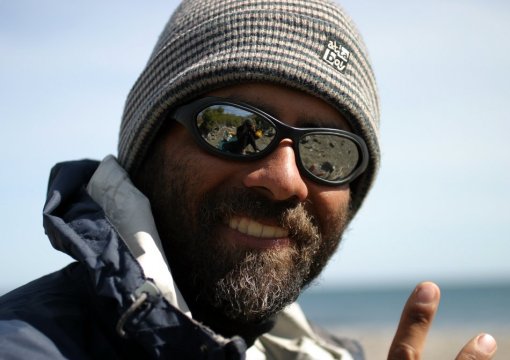
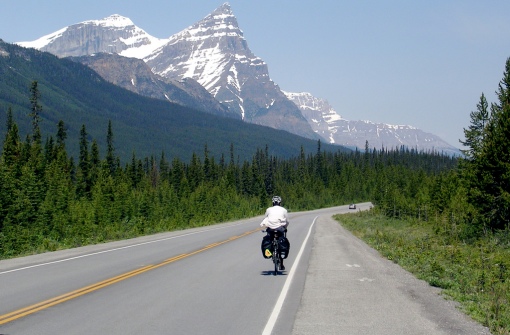


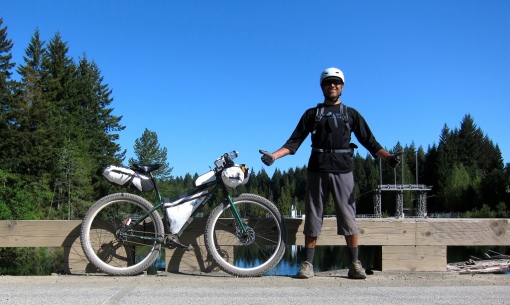
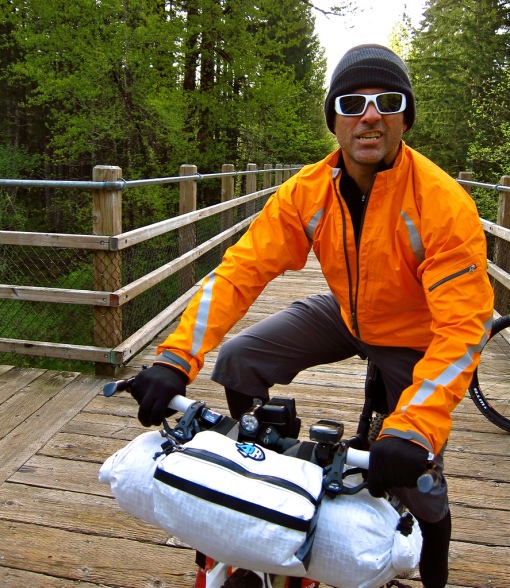


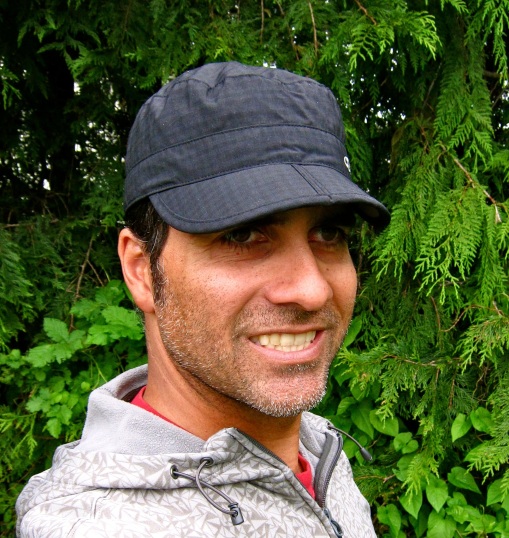



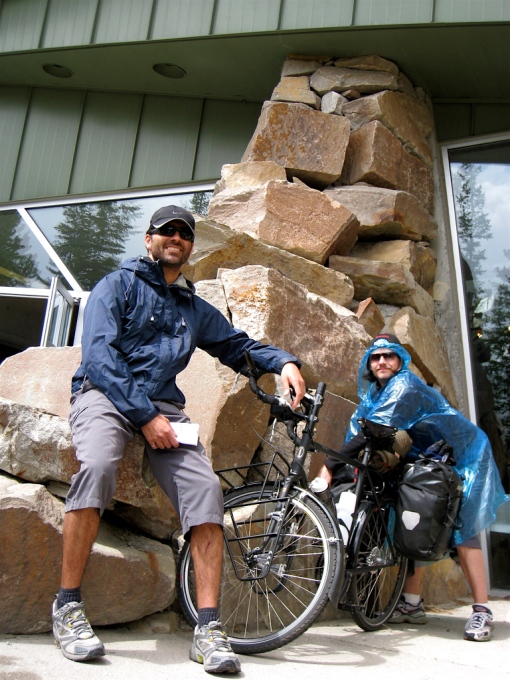





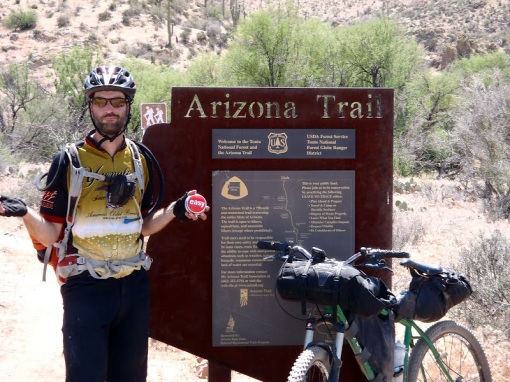














Recent Comments